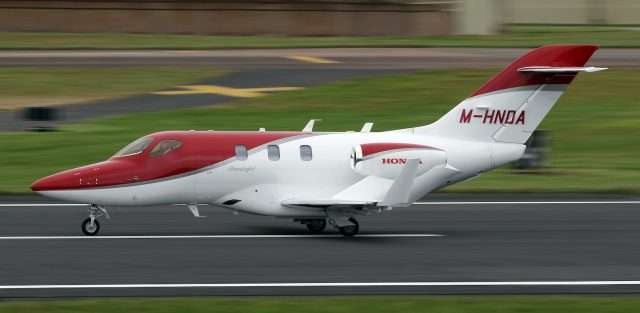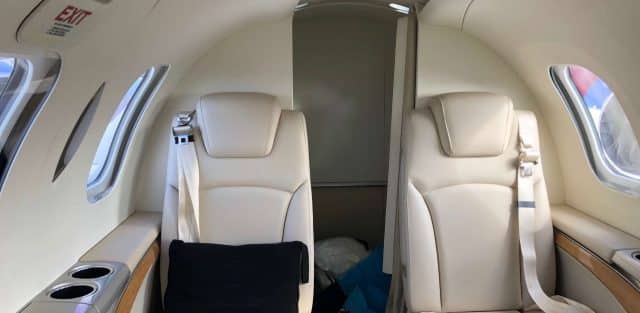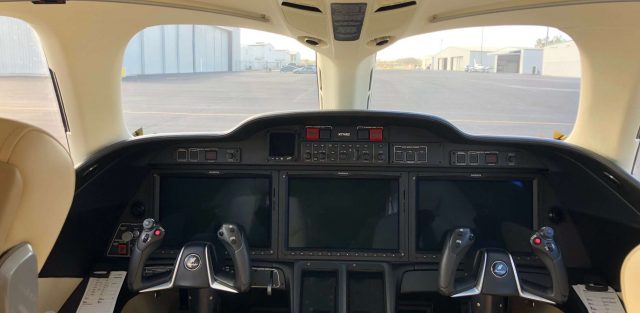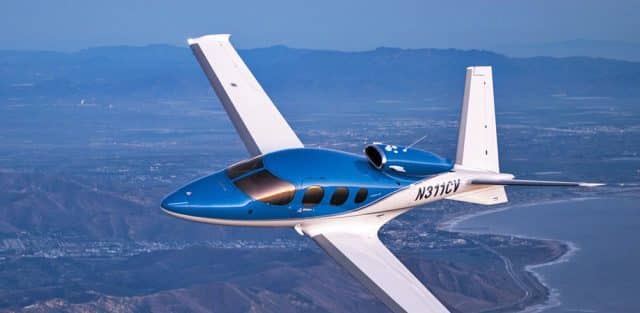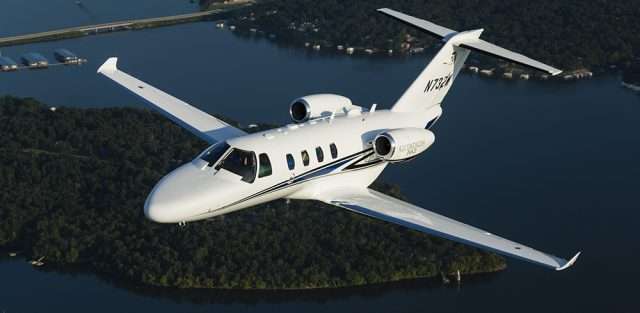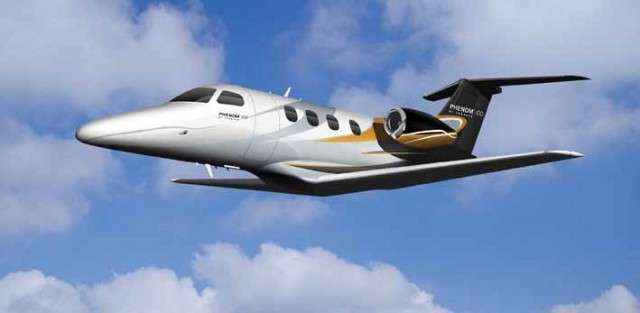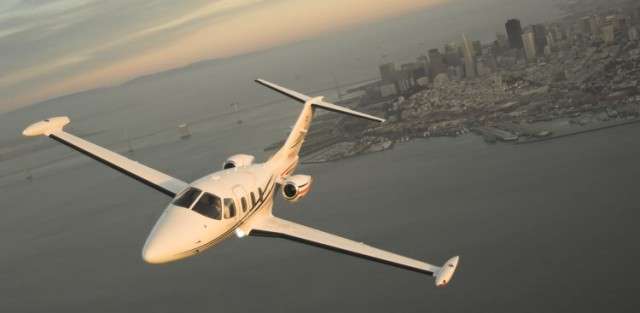Climb and cruise faster. Fly higher. Provide more room and less noise. Consume less fuel. You name it, and the HondaJet does it. More importantly, it does it better than its class competitors. In recent times, few aircraft have been as highly anticipated as the HondaJet was when it first entered service in 2015. This very light jet has lived up to the hype, and Stratos Jets is now proud to be able to offer Honda jet charters to our clients. Just as the Japanese manufacturer’s automobiles are renowned for their reliability and efficiency, the HondaJet uses a combination of innovation and leading edge technology to give it some unique advantages over VLJs. One of the first things you’ll notice about this aircraft is the placement of two GE Honda Aero Engines HF120 turbofans on pylons above the wing (most jet engines are mounted directly to the tailcone). This configuration helps maximize cabin space, while also:
- Improving aerodynamic properties
- Reducing cabin noise
- Increasing fuel efficiency
Reimagining How a Business Jet Performs
This, combined with the use of lightweight materials (it uses an aluminum wing and composite fuselage) and the use of natural laminar flow technology, allows it to travel more than 1,200 nautical miles, both quickly and efficiently. Honda jet charters boast an impressive top-end cruise speed of 485 mph and a long-range cruise speed of 423 mph. This allows passengers to travel further and faster than the competition. For takeoffs, the HondaJet requires less than 4,000 feet, and for landings, it needs less than 3,050 feet. The HondaJet soars up to a maximum altitude of 43,000 feet, which is superior to most competitors in both the VLJ and light jet segments. And it reaches that service ceiling in just 26 minutes (maximum climb rate of 3,990 feet per minute). This gives it the power to quickly rise above inclement weather systems.
Class-leading Cabin Comfort and Amenities
As mentioned, the over-the-wing engine mounts allowed Honda the freedom to shape the aircraft’s fuselage to emphasize cabin comfort. The 17.8-foot-long cabin offers executive seating for four passengers, plus an optional fifth side-facing seat. The engine placement also permits more baggage storage than many of its competitors, with 66 cubic feet of combined external storage in the nose and aft compartments. As you’d expect, the HondaJet’s cabin comes equipped with the latest technology. Passengers can use their smartphones and tablets to easily control things like:
- Audio
- Lighting
- Temperature
- Electrochromatic window shades
Another feature that helps Honda jet charters stand out in the VLJ class is the inclusion of a fully private, flushable lavatory in the aft. While Honda is new to the aviation game, the Japanese manufacturer has been studying it for quite some time. They began testing engine designs for small business jets—including both turbofan and turboprop variants—in the 1980s. Given the company’s stature and longevity, it would seem that Honda jet charters are here for the long haul.
Honda Jet: Aircraft Charter Specifications
| MANUFACTURER | Honda |
|---|---|
| CABIN HEIGHT | 4.79 ft |
| CABIN WIDTH | 4.99 ft |
| CABIN LENGHT | 17.82 ft |
| CRUISE SPEED | 423 mph |
| CRUISE ALTITUDE | 43,000 ft |




